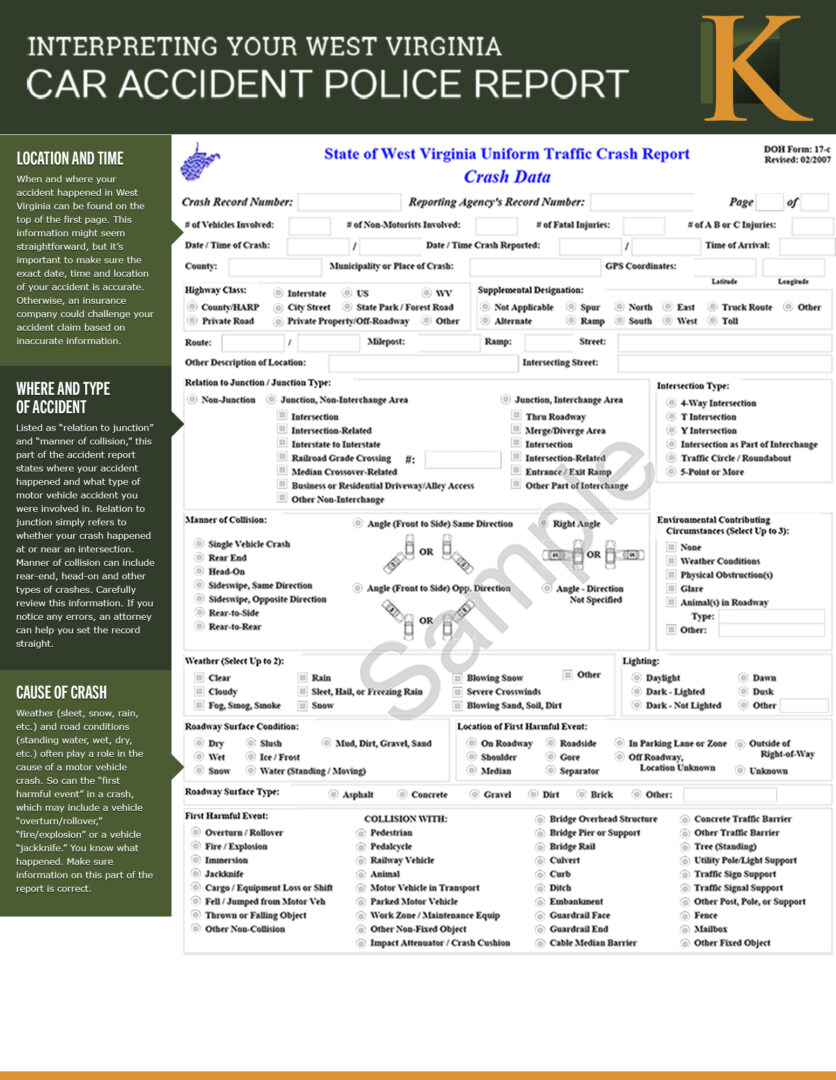Interpreting Your WV Car Accident Police Report
Location and time
Where and type of accident
Cause of crash
Road conditions
Narrative
Crash diagram
Vehicle information
Vehicle damage and maneuvers
Crash events and diagrams
A “crash event” as defined by this official accident report can be a sequence of different events, including “equipment failure,” a vehicle overturning, an animal in the road or a traffic barrier. There are also five different, circular vehicle diagrams for the investigating police officer to choose from when filling out the report. Each diagram applies to a different type of vehicle, including a single car, motorcycle, bus, tractor-trailer or car with a towing unit.
Driver data
Drug or alcohol use
Traffic violations
Driver statement
Passenger data
Statement
Pedestrians, cyclists and other non-motorists
Commercial motor vehicles
Crash diagram
Some investigating police officers use this page to draw a large diagram of the accident. Carefully review the drawing for accuracy. Does the drawing accurately show the correct positions of the vehicles involved in the crash? Or does the diagram need to be amended? You were there. You know what happened. Make sure the drawing is correct. Talk to a lawyer and learn more about your legal options.
Click here to download a printable version.








What you can expect from our West Virginia attorneys
The first thing you’ll notice when you come to our Law Offices is that we’ll listen to your story. We want to know what you’re going through and what you need. Then, we’ll explain how West Virginia law applies to your specific situation and what your legal options are. There are no cookie-cutter answers here. We create a legal strategy tailored to each client’s individual needs.
Depending on your situation, we will find the right path forward. We are adept at resolving your legal matters through negotiation and mediation whenever possible. But we also won’t hesitate to take your case to trial if that’s what it takes to get the best possible outcome for you.
Throughout the process, you can expect honest communication and compassionate support. Our team understands that legal issues can be overwhelming, and we strive to make the process as clear and stress-free as possible. We keep you informed at every stage and are always available to answer your questions or address your concerns. You’re not just another case to us—you’re a person who deserves thoughtful guidance and dedicated advocacy.
If you’re facing a legal challenge and need someone in your corner, don’t wait to get the help you deserve. Contact Klie Law Offices today to schedule a confidential consultation and take the first step toward a solution that works for you.











